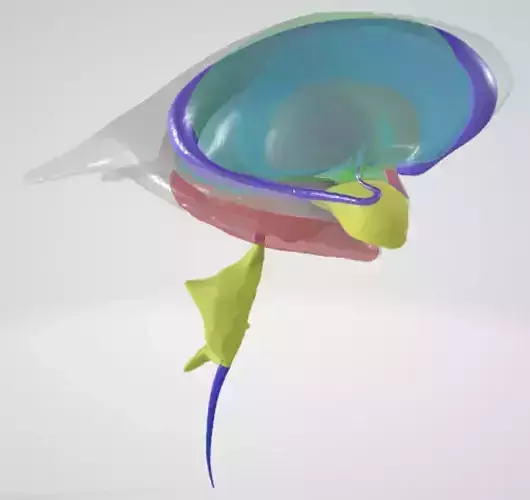
24-part 3D Limbic Basal Ganglia and Ventricular Systems 3D print model
This model is part of a COMPREHENSIVE, HIGHLY DETAILED BRAIN ANATOMY COLLECTION, with all components precisely aligned and fully compatible in relative position and scale.
The basal ganglia are a group of interconnected deep brain structures that regulate voluntary movement, procedural learning, and certain aspects of emotion and cognition. Including 7 Key components include the caudate nucleus, putamen and globus pallidus, lentiform nucleus, the substantia nigra (pars compacta and pars reticulata), and their close functional partner, the thalamus.
The limbic system is a network of interconnected brain structures that plays a central role in regulating emotion, memory, motivation, and certain aspects of behavior. It integrates sensory inputs with emotional responses and influences autonomic and endocrine functions through its connections with the hypothalamus.10 Key components: Amygdala, Fornix, Hippocampal commissure, Hippocampus, Hypothalamus, Mammillary body, Septal nuclei, Septum pellucidum, Stria medullaris thalami, Stria terminalis.
The ventricular system is a network of interconnected cavities in the brain filled with cerebrospinal fluid (CSF), which cushions the brain, removes waste, and helps maintain its chemical stability.Including 7 components: Lateral, third, forth ventricles, central canal, foramen of Monro, Sylvius canal, Choroid plexus
All the structures are segmented in separate STL files. There is combined file LIMBIC + BASAL GANGLIA + VENTRICULAR SYSTEM in various formats: OBJ, MTL, STL, DAE, PLY, GLB


































